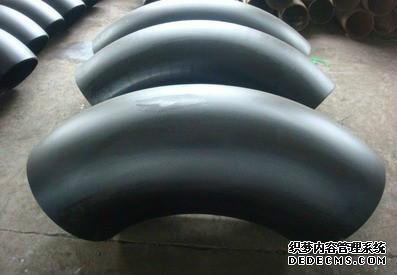Carbon steel elbow and production inspection
Home >
-
API steel pipe
- API steel pipe
- API steel casing pipe
- Casing and Tubing
- API drill pipe
- API5L steel pipe
- Oil pipeline

-
Carbon steel pipe
- Carbon steel pipe
- Welded steel Pipe
- seamless carbon steel pipe
- Petroleum Casing Pipe

-
Alloy steel pipe
- astm a 335 gr p22
- alloy steel pipe l555
- 25crmo4 alloy steel pipe
- alloy pipe a335 p11








- Applications of welded pipe pil
- welded steel pipes and Seamless
- ASTM A 106 Seamless Pipe
- seamless steel pipe production
- What is API Standards For Line
- seamless steel pipe On-line col
- EN 10305-1 / DIN 2391 cold draw
- EN 10255 Standard Pipe,replaces
- API 5L A53 / A106 Grade B, Seam
- A178 ERW STEEL PIPE, SA178 CARB

One of the Top 500 enterprises in China foreign trade
QCCO was approved as a member of “China Association for Contracting Projects Abroad “and granted a membership certificate on Sep 28,2005; “Credibility Rating AAA certificate in Foreign Trade” was granted to QCCO by China Shippers’ Association

Carbon steel elbow cracks and production inspection
How to make the crack in the mid-frequency elbow pipe bending process no longer occur in the mid-frequency bending pipe and the protection of micro-cracks in the induction heating bending steel pipe, when the deformation temperature exceeds a certain level and a certain level of deformation, in the carbon The outer side of the steel elbow will produce micro cracks. Both of these conditions are related to the material of the bent steel pipe.
Under the similar forming conditions of low deformation speed and high tensile resistance, all bending operations of the bender under this condition may cause such data damage. With respect to microcracking, we stopped with grain boundary cracks. According to the forming conditions, the crack length normally reachable is mainly generated at the austenite grain boundary perpendicular to the stress direction (longitudinal direction of the child), and thus perpendicular to the extension.
The slag of the tube. After the steel pipe is bent, the steel is recrystallized by heat treatment, so that the microcrack is transformed into a crystal crucible. A general discussion on the mechanical properties of micro-cracks affecting hydraulic pipe benders indicates that both yield strength and tensile strength will not be affected at room temperature and at higher temperatures. However, microcracking can cause significant changes in the slot impact value.
Under the similar forming conditions of low deformation speed and high tensile resistance, all bending operations of the bender under this condition may cause such data damage. With respect to microcracking, we stopped with grain boundary cracks. According to the forming conditions, the crack length normally reachable is mainly generated at the austenite grain boundary perpendicular to the stress direction (longitudinal direction of the child), and thus perpendicular to the extension.
The slag of the tube. After the steel pipe is bent, the steel is recrystallized by heat treatment, so that the microcrack is transformed into a crystal crucible. A general discussion on the mechanical properties of micro-cracks affecting hydraulic pipe benders indicates that both yield strength and tensile strength will not be affected at room temperature and at higher temperatures. However, microcracking can cause significant changes in the slot impact value.

In order to ensure the optimal quality of the carbon steel elbow, prior to the production of the official product, the steel pipe with different pipe diameters and different wall thicknesses needs to be subjected to the process evaluation.
The ASME specification NB-4212 forming and bending process can be performed. After the carbon steel elbow is formed, check: After the elbow is finished, check the appearance and dimensions of the elbow. The appearance of the bend should be free of surface cracks, cracks, wrinkles or other detrimental phenomena. The size inspection of the elbow mainly includes: wall thickness, bending angle, bending radius, wavyness, flatness, ellipticity and so on. When checking the wall thickness of bends, reference should be made to the requirements of the process assessment.
Affected by factors such as unequal material organization and wall thickness, when the actual pipe bends, the curved part is prone to wave phenomenon. For the measurement of undulation, please refer to the requirements of PFI standard ES-24: The two adjacent maximum peak diameters of the pipe after bending The difference between the mean value and the minimum trough diameter of the pipe between the peaks should not exceed 3% of the nominal outer diameter of the pipe. For measurements of bending radius, bending angle, etc., refer to the recommended tolerances in the ES-24 of the PFI standard. The data should be recorded after the dimension measurement is completed.
The ASME specification NB-4212 forming and bending process can be performed. After the carbon steel elbow is formed, check: After the elbow is finished, check the appearance and dimensions of the elbow. The appearance of the bend should be free of surface cracks, cracks, wrinkles or other detrimental phenomena. The size inspection of the elbow mainly includes: wall thickness, bending angle, bending radius, wavyness, flatness, ellipticity and so on. When checking the wall thickness of bends, reference should be made to the requirements of the process assessment.
Affected by factors such as unequal material organization and wall thickness, when the actual pipe bends, the curved part is prone to wave phenomenon. For the measurement of undulation, please refer to the requirements of PFI standard ES-24: The two adjacent maximum peak diameters of the pipe after bending The difference between the mean value and the minimum trough diameter of the pipe between the peaks should not exceed 3% of the nominal outer diameter of the pipe. For measurements of bending radius, bending angle, etc., refer to the recommended tolerances in the ES-24 of the PFI standard. The data should be recorded after the dimension measurement is completed.
Common carbon steel elbow detection: 1, impact test evaluation: According to NB-4213 requirements on the evaluation of impact performance. Samples are used for process qualification tests.
The test materials shall have the same specifications, grades (categories) and heat treatment regime as the materials used in the parts, and have similar impact properties. These specimens shall be subjected to the same forming or bending process and heat treatment system as the component materials, and corresponding tests shall be conducted to determine that the impact properties after forming still meet the specification requirements.
The test materials shall have the same specifications, grades (categories) and heat treatment regime as the materials used in the parts, and have similar impact properties. These specimens shall be subjected to the same forming or bending process and heat treatment system as the component materials, and corresponding tests shall be conducted to determine that the impact properties after forming still meet the specification requirements.
2. Assessment of wall thickness: Assessment is based on the wall thickness requirements in NB-4223.1. Before and after the bending of the wall measurements, calculate the thinning rate shall not be lower than the requirements of the specification or technical specifications. All standard wall thickness tubes and special (non-standard wall thickness) tubes are bent in a nominal tube with a bending radius of less than 10 times the nominal tube size. After bending, the wall thickness should be ultrasonically applied at each point of cut and curved arc. Measured in the middle to complete a set of three thickness measurements.
3. Evaluation of other physical and chemical test performances: The mechanical properties of the material before and after the bending forming, such as chemical composition, grain size, intergranular corrosion susceptibility, tensile strength, etc., shall also be evaluated according to the corresponding material specification requirements to ensure the carbon steel elbow The process does not affect its chemical composition and mechanical properties.
4. Evaluation of forming dimensions: In accordance with the PFI pipe prefabrication standards, the dimensions of the bend after forming: bending angle, ellipticity, undulation, and bending radius are to be evaluated, and the tolerance in the PFI ES-24 should be met.


